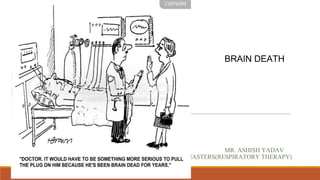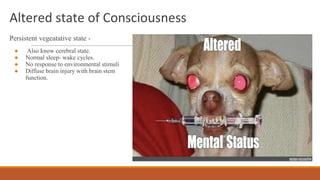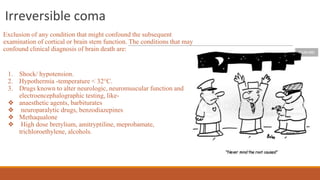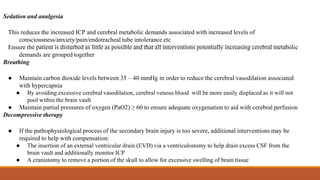1. Brain death is defined as the irreversible loss of all brain function, including the brainstem. The three essential findings are coma, absence of brainstem reflexes, and apnea on testing.
2. Common causes of brain death include traumatic brain injury, intracerebral hemorrhage, hypoxic-ischemic injury from cardiopulmonary arrest. A thorough exam is required to determine the cause and rule out potential confounders.
3. Evaluation of brain death involves assessing for coma, absence of brainstem reflexes on exam, and a positive apnea test showing lack of respiratory drive and rising CO2 levels. Ancillary tests like angiography or EEG can also be




























